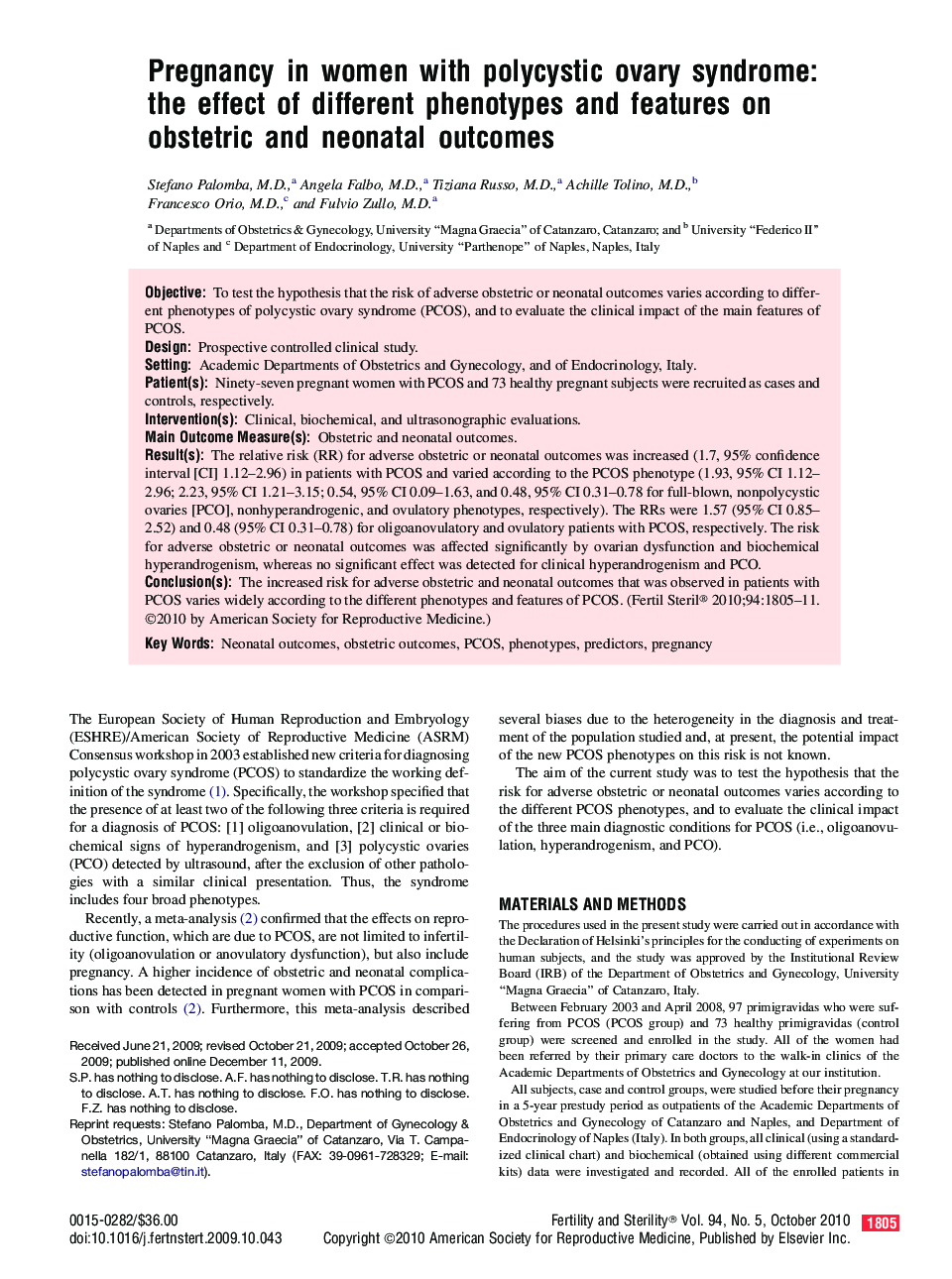| Article ID | Journal | Published Year | Pages | File Type |
|---|---|---|---|---|
| 3940501 | Fertility and Sterility | 2010 | 7 Pages |
ObjectiveTo test the hypothesis that the risk of adverse obstetric or neonatal outcomes varies according to different phenotypes of polycystic ovary syndrome (PCOS), and to evaluate the clinical impact of the main features of PCOS.DesignProspective controlled clinical study.SettingAcademic Departments of Obstetrics and Gynecology, and of Endocrinology, Italy.Patient(s)Ninety-seven pregnant women with PCOS and 73 healthy pregnant subjects were recruited as cases and controls, respectively.Intervention(s)Clinical, biochemical, and ultrasonographic evaluations.Main Outcome Measure(s)Obstetric and neonatal outcomes.Result(s)The relative risk (RR) for adverse obstetric or neonatal outcomes was increased (1.7, 95% confidence interval [CI] 1.12–2.96) in patients with PCOS and varied according to the PCOS phenotype (1.93, 95% CI 1.12–2.96; 2.23, 95% CI 1.21–3.15; 0.54, 95% CI 0.09–1.63, and 0.48, 95% CI 0.31–0.78 for full-blown, nonpolycystic ovaries [PCO], nonhyperandrogenic, and ovulatory phenotypes, respectively). The RRs were 1.57 (95% CI 0.85–2.52) and 0.48 (95% CI 0.31–0.78) for oligoanovulatory and ovulatory patients with PCOS, respectively. The risk for adverse obstetric or neonatal outcomes was affected significantly by ovarian dysfunction and biochemical hyperandrogenism, whereas no significant effect was detected for clinical hyperandrogenism and PCO.Conclusion(s)The increased risk for adverse obstetric and neonatal outcomes that was observed in patients with PCOS varies widely according to the different phenotypes and features of PCOS.
